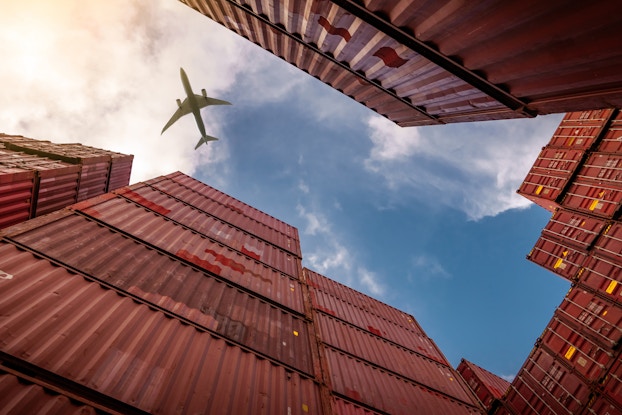
The COVID-19 pandemic has disrupted supply chains across many industries. Businesses that rely on overseas manufacturing as well as American-made product businesses have seen significant shipping delays and material availability issues throughout this year, and there are likely to be long-term effects to the world of logistics.
As we head into 2021, any business that relies on a supply chain to manufacture and distribute its products should be thinking about a backup plan to deal with any unexpected interruptions in the future.
Supply chain challenges during COVID-19
The supply chain challenges faced during COVID-19 have had a ripple effect, impacting numerous businesses, vendors and consumers during 2020. A few major ones include:
- Product and raw material availability. When the coronavirus was first identified in China, businesses that source raw materials and products from there experienced a shortage of available goods due to shutdowns.
- Slow shipping times. Fewer materials mean fewer products are being put into production. Many companies struggled to keep pace with demand, which slowed down shipping times while they waited for products to become available.
- Customer demand fluctuation. Early in the pandemic, many consumers panicked and bought an overabundance of goods like toilet paper and canned food to prepare for quarantine. This cycle of "panic buying," combined with slower production and shipping times, created an increased demand with which manufacturers struggled to keep up.
- Regional regulations and closures. The pandemic hit different regions of the world at different times, and the case spikes and lockdowns have been happening in waves. This has made it difficult to maintain a consistent production schedule, as some countries had to close or restrain their borders, while others operated at near-normal capacity.
[Read: Experts Unpack the Massive Cross-Industry Impact of the Coronavirus]


How companies pivoted to overcome supply chain challenges
The supply chain disruptions of 2020 meant businesses had to find some creative solutions. To keep up with orders, product businesses started looking at other manufacturing resources.
"We have been vetting new raw material suppliers in different countries of origin to provide a backup for us in case we cannot get materials in time," said Mark Kohlenberg, founder and CEO of WDM Footwear & Accessories. "We are also working with a variety of new suppliers to try to lessen our exposure to any one shipper in case they cannot accommodate our shipments."
Many companies also made adjustments to the products and services they provided and their distribution method, both to stay in business and to reach new as well as existing customers.
"Dine-in establishments became carryout overnight, manufacturers locked in longer contracts with suppliers and small businesses pivoted by adding more services when products are backordered," said Brady Maller, EVP of strategy and sales at POLYWOOD.
[Read: Delivering on Startup Dreams: Start a Delivery Service Partner Business Delivering for Amazon]
How to create a supply chain backup plan
While global supply chains have somewhat stabilized since the beginning of the pandemic, it's still important for small businesses and large corporations to have a supply chain backup plan to prepare for any future uncertainties. Here are some steps you can take to create a backup plan for your company:
Leverage your existing suppliers to see if they can pivot with you
As your production and distribution plan changes, see if your suppliers and distributors will be able to change with you. Have ongoing discussions about contingency plans and whether they can be flexible about contracts and payment terms.
If your current suppliers are limited in their options, find alternatives and backups that you could use in an emergency.
"We want to try to work with our supply base as much as possible," Kohlenberg told CO—. "However, times like this are not entirely predictable and we have to be open to consider suppliers we may have not worked with previously, if they can be helpful in a crunch situation."
Develop regional supplier relationships to accommodate unexpected closures
If you're reliant on a single supplier, now may be the time to start forging multiple relationships in different regions of the country or world. Contemplate how you might pivot with these regional vendors if new regulations or closures occur so you can maintain your production schedule.
"Regulations can be dramatically different from state to state, and unpredictable business closures have been the reality," Maller said. "Making contingency plans for your supply chain to source from different regions as new regulations or closures occur are an essential part of any backup plan."
Explore technology to help you meet logistical demands
The pandemic has provided a valuable lesson for many companies to keep an eye on emerging technologies. For instance, Deloitte envisions technologies like 5G, the Internet of Things, artificial intelligence and 3D printing playing a huge role in keeping global supply chains moving. Instead of a traditional linear supply chain model, your business can rely on digital supply networks, where your organization can connect its complete supply network through technology to "enable end-to-end visibility, collaboration, agility and optimization."
[Read: Pandemic Trend: Seeking Efficiency and Safety, Businesses Accelerate Warehouse Automation]
CO— aims to bring you inspiration from leading respected experts. However, before making any business decision, you should consult a professional who can advise you based on your individual situation.
Follow us on Instagram for more expert tips & business owners’ stories.
CO—is committed to helping you start, run and grow your small business. Learn more about the benefits of small business membership in the U.S. Chamber of Commerce, here.







